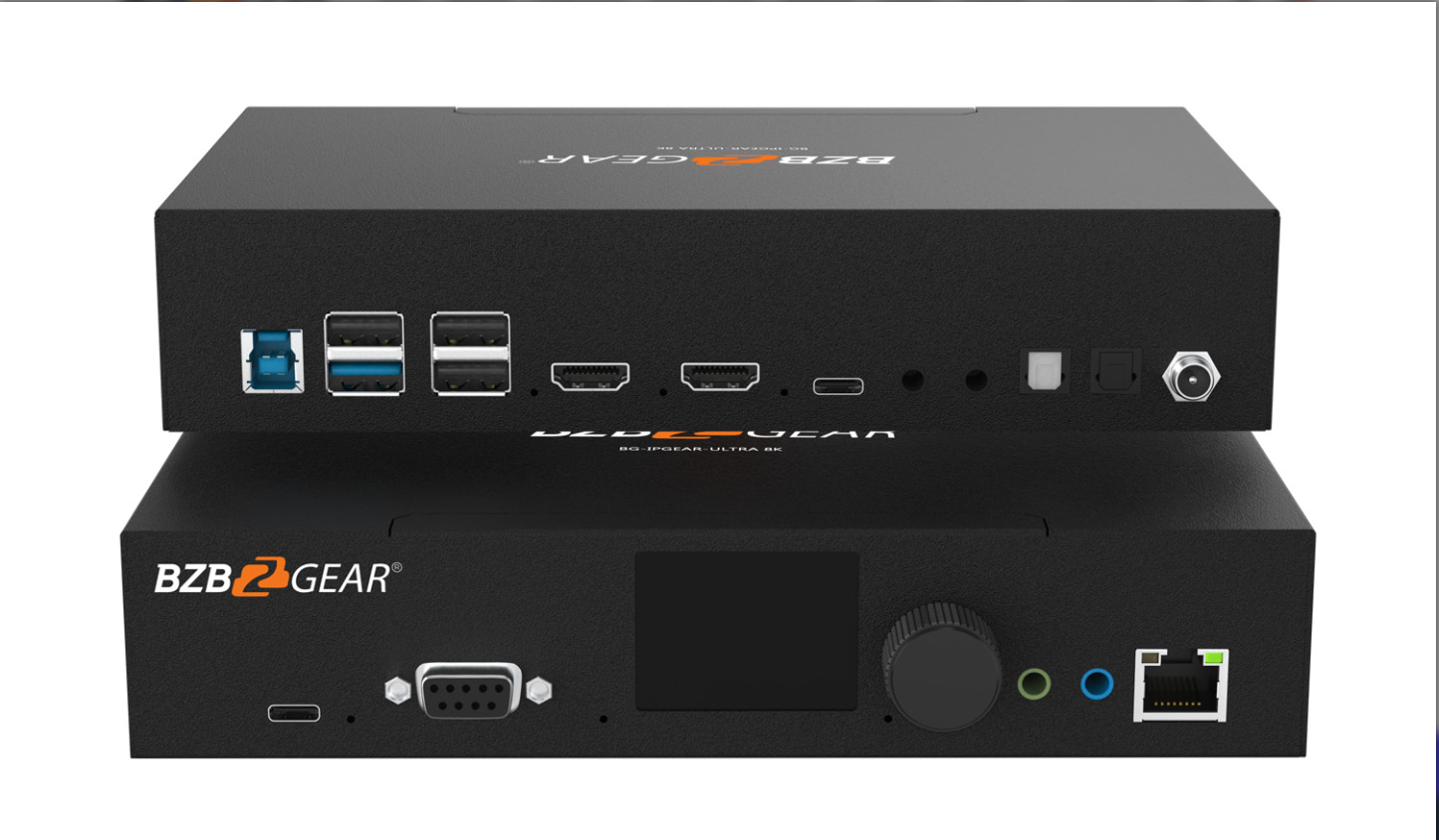
The rapid evolution of audiovisual (AV) technology has brought about innovative solutions that enhance efficiency, flexibility, and scalability. One of the most transformative advancements in this space is AV over IP, a technology that leverages network infrastructure to distribute high-quality audio and video signals. Unlike traditional AV setups that rely on dedicated cabling and hardware-based switching, AV over IP utilizes Ethernet networks, allowing seamless real-time transmission and remote management.
From corporate environments to live events, digital signage, education, healthcare, and command centers, this technology is redefining how organizations manage their AV needs.
What is AV over IP?
AV over IP (Audio-Visual over Internet Protocol) refers to the transmission of audiovisual signals over a standard network instead of dedicated AV cables like HDMI or SDI. This approach allows for greater flexibility, scalability, and efficiency, making it ideal for both small and large-scale AV deployments.
Instead of relying on traditional matrix switchers, AV over IP solutions use network switches to distribute signals, enabling:
- Scalable AV distribution – Expand AV systems without major infrastructure changes.
- Remote content management – Control AV sources and displays from anywhere.
- High-quality, low-latency transmission – Ensures seamless video and audio playback.
By using AV over IP, organizations can future-proof their AV systems while reducing operational costs.
Benefits of AV over IP
1. Scalability and Flexibility
Traditional AV systems often require extensive cabling and complex setups, limiting expansion capabilities. AV over IPeliminates these constraints by allowing organizations to add new displays and sources without rewiring or replacing existing infrastructure.
- Supports an unlimited number of AV endpoints.
- Easily integrates with existing network infrastructure.
- Reduces the need for costly hardware upgrades.
2. Cost Efficiency
Switching to AV over IP reduces costs associated with dedicated AV cabling and proprietary matrix switchers. Instead, standard network components such as Ethernet switches can be used to manage AV distribution, significantly lowering hardware and installation expenses.
- Uses cost-effective Ethernet cables instead of specialized AV cables.
- Requires fewer hardware components for large-scale deployments.
- Reduces maintenance and upgrade costs.
3. High-Quality, Low-Latency Streaming
One of the key concerns with AV distribution is maintaining high-quality video and audio transmission with minimal latency. AV over IP technology supports 4K UHD video and uncompressed audio, ensuring smooth playback across multiple displays.
- Delivers crisp, high-definition video with minimal delay.
- Supports HDR (High Dynamic Range) for enhanced visual performance.
- Ensures synchronized audio-visual transmission for professional setups.
4. Remote Management and Control
Organizations that require centralized AV management benefit from AV over IP solutions, as they enable remote monitoring, configuration, and troubleshooting. This is particularly useful in environments such as corporate offices, digital signage networks, and control rooms.
- Access AV systems from anywhere using cloud-based platforms.
- Make real-time adjustments to video and audio settings.
- Reduce downtime by troubleshooting remotely.
Applications of AV over IP
1. Corporate Environments and Conference Rooms
Businesses rely on AV over IP for seamless presentations, video conferencing, and collaborative meetings. The ability to transmit high-quality video signals across multiple conference rooms enhances productivity and communication.
- Enables real-time content sharing across different locations.
- Supports high-resolution video conferencing for remote teams.
- Simplifies integration with existing IT networks.
2. Live Events and Entertainment
Concerts, sports events, and live productions require low-latency video streaming to provide real-time audience engagement. AV over IP ensures flawless content delivery across LED walls, projectors, and screens.
- Enables dynamic video content switching.
- Ensures synchronized audio-visual performance for live productions.
- Reduces cabling complexity in large venues.
3. Digital Signage and Advertising
Retail stores, airports, stadiums, and public spaces use AV over IP to manage large-scale digital signage networks. This technology allows businesses to update and control content remotely across multiple locations.
- Provides centralized control of advertisements and promotional displays.
- Supports multi-zone content distribution.
- Allows scheduled content updates in real time.
4. Education and Training Centers
Schools, universities, and training facilities use AV over IP to enhance interactive learning experiences by delivering high-quality video and audio content to classrooms, lecture halls, and virtual learning environments.
- Supports online learning with real-time video streaming.
- Enables seamless AV distribution across multiple classrooms.
- Reduces infrastructure costs while maintaining high-quality education delivery.
5. Healthcare and Medical Facilities
Hospitals and healthcare institutions benefit from AV over IP for remote patient monitoring, telemedicine, and surgical broadcasts. High-resolution video feeds allow medical professionals to share critical information across departments.
- Supports real-time transmission of medical imaging and diagnostics.
- Enhances remote consultations and training for healthcare professionals.
- Provides secure, encrypted AV transmission for sensitive data.
6. Command Centers and Security Operations
Security monitoring requires real-time video feeds from multiple surveillance cameras. AV over IP enables operators to switch between live camera feeds instantly, improving situational awareness.
- Provides seamless video wall integration for control rooms.
- Supports multiple camera feeds with low latency.
- Enables remote monitoring and real-time incident response.
Choosing the Right AV over IP Solution
When selecting an AV over IP system, consider the following:
- Network Compatibility – Ensure it supports Gigabit Ethernet or higher for smooth streaming.
- Scalability – Choose a solution that allows easy expansion of displays and sources.
- Low Latency Performance – Opt for solutions with near-zero latency for real-time applications.
- Remote Control Capabilities – Ensure it includes web-based or cloud-based management options.
For a high-performance and scalable solution, explore AV over IP systems designed for professional AV distribution.
Conclusion
AV over IP is the future of scalable, flexible, and cost-efficient AV distribution, offering seamless real-time transmission across corporate spaces, live events, digital signage networks, educational institutions, healthcare facilities, and security operations. By eliminating traditional AV limitations and leveraging modern networking technology, AV over IP ensures high-quality, low-latency streaming, remote management, and scalable content control.For the best AV over IP solutions, explore the latest advancements in network-based AV distribution and upgrade your system for enhanced performance and efficiency.
Advertise with the mоѕt vіѕіtеd nеwѕ ѕіtе іn Antigua!
We offer fully customizable and flexible digital marketing packages.
Contact us at [email protected]



